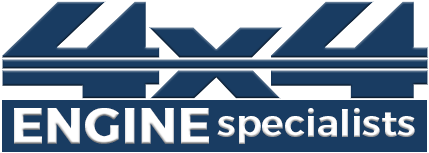If you have recently replaced your Range Rover engine, you might be wondering how to keep it in good condition and extend its lifespan. Replacing an engine is a costly and complex process, so you want to make sure you get the most out of your investment. In this article, we will share some tips on how to maintain your Range Rover engine after a replacement, covering topics such as:
Checking the oil level and quality regularly
- Changing the oil and filter according to the manufacturer’s recommendations
- Keeping the cooling system clean and functional
- Avoiding excessive idling and driving habits that put stress on the engine
- Inspecting the belts, hoses, spark plugs, and other components for signs of wear and tear
- Scheduling regular tune-ups and inspections with a qualified mechanic
- Following the break-in period guidelines for your new engine
By following these steps, you can ensure that your Range Rover engine performs optimally and lasts longer. Let’s take a closer look at each of these tips and why they are important.
Consistently Monitoring the Oil Level and Quality
One of the most basic and essential steps in maintaining your Range Rover engine is checking the oil level and quality regularly. Oil is the lifeblood of your engine, as it lubricates, cools, cleans, and protects the moving parts from friction and damage. Without enough oil or with poor quality oil, your engine can overheat, wear out faster, or even seize up.
To check the oil level, you need to park your Range Rover on a level surface, turn off the engine, and wait for a few minutes to let the oil settle. If it is below the minimum mark, you need to add more oil as soon as possible. If it is above the maximum mark, you need to drain some oil or take your vehicle to a mechanic.
To check the oil quality, you need to look at the color, consistency, and smell of the oil on the dipstick. Fresh oil is usually amber or light brown in color, smooth in texture, and has a mild odor. As the oil ages and accumulates dirt, debris, metal particles, and other contaminants, it becomes darker in color, thicker in consistency, and has a burnt or sour smell. If your oil looks or smells bad, you need to change it as soon as possible.
Changing the Oil and Filter According to the Manufacturer’s Recommendations
Checking the oil level and quality is not enough to maintain your Range Rover engine. You also need to change the oil and filter according to the manufacturer’s recommendations. Changing the oil and filter is one of the most important services you can do for your engine, as it removes the old and dirty oil that can harm your engine and replaces it with fresh and clean oil that can enhance its performance and efficiency.
The frequency of changing the oil and filter depends on several factors, such as:
- The type of oil you use (synthetic or conventional)
- The driving conditions you encounter (city or highway)
- The climate you live in (hot or cold)
As a general rule of thumb, you should change your oil and filter every 5,000 miles or six months, whichever comes first. However, you should always consult your owner’s manual or your mechanic for more specific guidelines for your particular model and situation.
Using the Right Type of Fuel for Your Engine
Another simple but crucial step in maintaining your Range Rover engine is using the right type of fuel for your engine. Different engines require different types of fuel to run properly and efficiently. Using the wrong type of fuel can cause problems such as:
- Reduced performance and power
- Lower fuel economy
- Increased emissions
- Engine knocking or pinging
- Damage to the fuel system or engine components
To avoid these issues, you need to use the type of fuel that is recommended by the manufacturer for your specific model. You can find this information in your owner’s manual or on a sticker inside the fuel filler door. For example, some Range Rover models require premium unleaded gasoline with an octane rating of 91 or higher, while others can use regular unleaded gasoline with an octane rating of 87 or higher.
Maintaining the cooling system’s cleanliness and efficiency
The cooling system is another vital part of your Range Rover engine that needs regular maintenance. The parts of the cooling system include things like:
- The radiator
- The water pump
- The thermostat
- The hoses
- The coolant
The cooling system’s main function is to regulate the temperature of your engine and prevent it from overheating. It does this by circulating a mixture of water and coolant (also known as antifreeze) through the engine and the radiator, where it absorbs and releases heat. If the cooling system is not working properly, your engine can overheat, which can lead to:
Reduced performance and efficiency
- Increased emissions
- Engine warping or cracking
- Head gasket failure
- Engine seizure
To keep your cooling system clean and functional, you need to:
Check the coolant level and quality regularly
As directed by the manufacturer, replace the coolant.
Flush the cooling system periodically to remove dirt, rust, and scale
Inspect the radiator, water pump, thermostat, and hoses for leaks, cracks, or corrosion
Replace any damaged or worn-out components. More information about range rover visit us at https://4x4enginespecialists.co.uk/ .
Avoiding Excessive Idling and Driving Habits that Put Stress on the Engine
How you drive your Range Rover can also affect the condition and lifespan of your engine. Some driving habits that can put stress on your engine and cause it to wear out faster are:
Excessive idling: Idling your engine for long periods of time can waste fuel, increase emissions, and cause carbon buildup in the engine. It can also prevent the engine from reaching its optimal operating temperature, which can affect its performance and efficiency. To avoid excessive idling, you should turn off your engine when you are parked or waiting for more than a few minutes.
Rapid acceleration and deceleration: Accelerating and decelerating too quickly can put strain on your engine and cause it to consume more fuel. It can also increase the wear and tear on your brakes, tires, and transmission. To avoid rapid acceleration and deceleration, you should drive smoothly and steadily, maintaining a constant speed and following the traffic flow.
Driving at high speeds: Driving at high speeds can also put stress on your engine and cause it to use more fuel. It can also increase the risk of overheating, especially in hot weather or when towing a heavy load. To avoid driving at high speeds, you should follow the speed limit and use cruise control when possible.
Driving on rough roads: Driving on rough roads can expose your engine to bumps, vibrations, dust, and debris that can damage it. It can also affect the alignment, suspension, and steering of your vehicle. To avoid driving on rough roads, you should choose smooth and paved roads whenever possible. If you have to drive on rough roads, you should reduce your speed and avoid potholes or obstacles.
Inspecting the Belts, Hoses, Spark Plugs, and Other Components for Signs of Wear and Tear
Your Range Rover engine is composed of many parts that work together to make it run. Some of these parts are:
The belts: The belts are rubber or metal bands that connect different components of your engine, such as the alternator, the water pump, the power steering pump, and the air conditioning compressor. The belts transfer power from the crankshaft to these components and make them function. The belts can wear out over time due to friction, heat, or contamination. If they break or slip off, they can cause your engine to lose power or stop working altogether.
The hoses: The hoses are rubber or plastic tubes that carry fluids such as coolant, oil, fuel, or air to different parts of your engine. The hoses can crack, leak, or burst due to age, heat, pressure, or corrosion. If they do, they can cause your engine to overheat, lose oil pressure, or run poorly.


